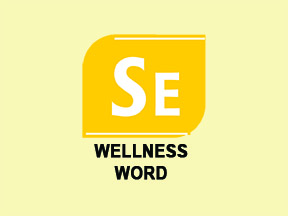Editor’s note: Wellness Word is an informational column which is not meant to replace a health care professional’s diagnosis, treatment or medication.
Yin and Yang of Fortified Foods
The legacy of Linus Pauling with regard to dietary vitamin C is undeniable. The scurvy-vitamin C connection is embedded in our thinking to the point that we feel safe consuming large amounts. Although too much dietary vitamin C will not be harmful, chronic mega doses of the essential vitamin in supplement form can cause problems (kidney stones, bloating, insomnia and heartburn, to name a few). This is just one example of why we now have recommended daily intakes (RDI) for the key vitamins and minerals. The amounts recommended were initially based on what was believed necessary to avoid deficiency diseases like scurvy and pellagra. The establishment of tolerable upper limits (TUL) due to the risks associated with ingesting too much of a particular supplement soon followed. Current recommendations are aimed at enhancing health in general.
When folate deficiency in pregnant women was found to significantly raise the risk of neural tube defects in the newborn, the federal government mandated that flour be fortified with 140 ug of folic acid (the synthetic form of folate, the natural B vitamin) per 100 grams to lower risk. Fortification did, indeed, accomplish that goal by significantly lowering the incidence of this defect. The FDA recently mandated that corn meal, a staple of the Hispanic diet, also be fortified with folic acid to provide protection to that segment of the population.
The success of added folic acid helped fuel the growth of the fortified food industry, which is as unregulated as the vitamin-mineral supplement industry. Not only are flour, pasta, cereal and other grain products fortified with folic acid, but some milk, dairy products and beverages are also fortified. Fear of over-fortification is a concern as some manufacturers seek to use fortification as a marketing tool.
The lack of TULs for fortified foods opened the door to heated discussions on how to protect the public without depriving them of any benefits. Some dairy products contain over 100% of the RDI for vitamin E. If you couple that intake with a daily multivitamin and natural food sources, a certain percent of the population will ingest more than the TUL for vitamin E.
A major study (SELECT) was designed to see if the relatively high intake of selenium and vitamin E (one or both) could lower risk of prostate cancer. It was stopped prematurely because the number of new cases of prostate cancer exceeded the expected average incidence in the group taking 400 IU vitamin E (the RDI for this vitamin is 30 IU).
Adequate intake of Vitamin D is essential for bone health. Fortified cow’s milk is a major source of vitamin D for children. A significant percentage of adults do not drink milk. They rely on supplements and/or fortified foods to maintain adequate vitamin D status. The same is true for vegetarians who rely on fortified food and supplements to achieve adequate vitamin D and calcium status. However, vitamin D2 which is not as effective as the natural vitamin D3, is often used in fortified milk products.
These distinctions have led to a conundrum as to the proper dietary guidelines when fortified foods are added to the mix of a daily synthetic multivitamin-mineral and a healthful diet. How much do you really need ? There are those who say you should get your RDI from synthetic vitamins and avoid fortified foods. There are those who promote the opposite argument. If we begin with the recommendations of most major health organizations, as well as some manufacturers of synthetic supplements, the best approach to meeting the RDI is by eating a varied healthful diet. Advice from an informed medical practitioner/nutritionist might be advisable.
By Dr. Jules M. Elias, Emeritus Professor of Clinical Health Sciences-Health Sciences Center, SUNY at Stony Brook, NY

